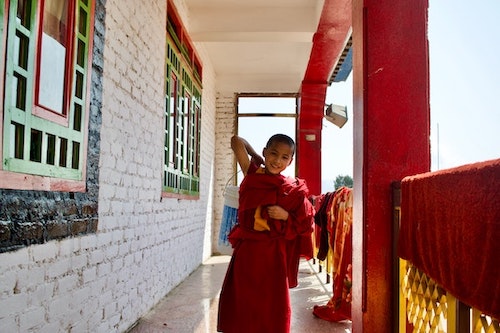 A former Kingdom and a fascinating Himalayan Jewel, Sikkim is situated in Eastern Himalayas spreading below Mount Kanchenjunga (8,534m), the third-highest mountain in the world. Lying between 27 to 28 degrees North latitude and 88 to 89 degrees East longitude, it is barely 7,096 sq. km in size yet has an elevation ranging from 224 m to 8,540 m above sea level in a distance of 110 km from North to South and 64 km from East to West. The state’s about 64 km width is squeezed between the mountainous Kingdoms of Bhutan and Nepal to the east and west respectively. The high plateau of Tibet lies 40 km to the north and India’s state of Bengal to its south.
A former Kingdom and a fascinating Himalayan Jewel, Sikkim is situated in Eastern Himalayas spreading below Mount Kanchenjunga (8,534m), the third-highest mountain in the world. Lying between 27 to 28 degrees North latitude and 88 to 89 degrees East longitude, it is barely 7,096 sq. km in size yet has an elevation ranging from 224 m to 8,540 m above sea level in a distance of 110 km from North to South and 64 km from East to West. The state’s about 64 km width is squeezed between the mountainous Kingdoms of Bhutan and Nepal to the east and west respectively. The high plateau of Tibet lies 40 km to the north and India’s state of Bengal to its south.
The various ethnic group has their own nomenclature for this enchanting land – the Nepalese call it 'Sukhim' or 'new home', while Tibetans refer to it as 'Denzong' or 'the valley of rice' and to the Lepchas, the original inhabitants of Sikkim, it is 'Nye-al-Ale' or 'heaven'.
Shrouded in heavy mist, the guardian deity Kanchenjunga protects the inhabitants of Sikkim. Omnipresent and mystical, Kanchenjunga finally yields to nature’s power and sheds its monsoon veil in autumn. Sikkimese celebrate this re-awakening with great pomp and ceremony during the 'Pang Lhabsol festival'. Locals believe that a great god created, from beneath the slope of this sacred mountain, the original man and woman from whom all Sikkimese descended.
Sikkim is conveniently divided into four regions – east, west, north and south. The most populated area is the eastern part which includes the capital town of Gangtok, followed by southern and western districts and finally the sparsely populated northern area with its inhospitable climate and steep ridges.